In the beginning, we all feel like a fraud sometimes.
There’s a yawning gap between how you present yourself online, and how you actually feel.
You know that to be credible online, people must see you as an expert, but when you just start your blog, it’s hard to feel like you deserve that label. Sure, you have a good understanding of your topic, and you’re expanding your knowledge every day, but are you truly an expert?
In truth, being seen as an expert is as much about your confidence as it is about the depth and breadth of your knowledge. If you act like an expert, people tend to treat you like one.
But here’s the thing. Knowledge breeds confidence. And if you sometimes feel like a fraud, it just means you don’t have quite enough knowledge yet.
So the question is: what do you need to know to confidently present yourself as an expert in your topic?
And how can you acquire that knowledge as quickly as possible?
The Surprising Truth About Being an Expert
In some fields, recognized qualifications denote the true experts, and they easily make money blogging.
After all, would you let anyone but a qualified surgeon operate on you?
But in most popular blogging fields, no universally accepted qualifications exist. And yet recognized experts still occupy those fields.
So what does being an expert truly mean?
Some argue that it comes down the amount of time you’ve spent studying a topic or learning a skill — 10,000 hours seems to be the magic number.
But here’s the thing. Expert status is not absolute — it’s relative.
The people you look up to as experts will have people that they look up to as experts too.
And even if one person is considered the most knowledgeable by everyone else in your field, does that mean they’re the only expert on that topic? Of course not.
So a better way to define an expert is as follows:
And the key to feeling like an expert is having enough of the right knowledge that you feel comfortable in the company of other experts.
So here’s our ultimate guide to becoming a confident expert in record time.
How to Find the “Minimum Viable Knowledge” for Expert Status
When you think of the experts in your topic, what names spring to mind? Who are the people who already have the recognition and respect you desire for yourself?
Two or three people should pop into your head immediately. With a little extra thought, several more should easily suggest themselves.
What if you had the combined knowledge of those people?
Not every tiny detail of what they know, but a good overall understanding. Then would you feel more like an expert? I bet you would.
Entrepreneur and motivational speaker Jim Rohn said:
So create a list of five to ten target experts — the most prominent people in your field, those you think you could learn the most from.
For example, let’s take the field of persuasion. The following are some of the prominent experts in that field:
- Robert Cialdini
- Dale Carnegie
- Dan Pink
- Oren Klaff
- Nick Kolenda
Now take each expert one at a time and identify their most important works.
Have they written any books? If so, what’s their most popular one? Their most influential? Check out Amazon to find any bestsellers. Use Google to find other mentions of their books — what are other influential people saying about them?
Sometimes a book is more famous than that expert who wrote it, so Amazon can also be a good way to identify experts that weren’t already on your list.
Also check out the expert’s website or blog, search for any talks on YouTube, and look for their podcasts on iTunes.
If the expert hasn’t published a book, try to find out what books they consider essential, and add those authors to your list too.
Let’s focus on Robert Cialdini. The following shows an overview of his content, organized as a simple mind map:
Once you’ve mapped out each expert’s body of work, you’ll pick just two or three works to focus on — perhaps their most famous book and a talk. Or their blog and a couple of videos. Taken together, this will be the content you’ll need to acquire to build your expert confidence.
Now that you’ve identified the knowledge you need to acquire, we’ll look at how to rapidly acquire that knowledge, starting with how to get a solid understanding of a book in just one hour.
- XMind — a popular desktop tool for Mac and PC (has a limited, free version)
- Mindmup — a free online mind mapping tool which integrates with Google Drive
- MindJet — the premium desktop tool for Mac and PC (good, but expensive)
For a complete list of mind mapping tools check out this ultimate guide.
How to Learn the Contents of Almost Any Book in Just One Hour
Popular books are the cornerstones of the knowledge you will acquire from others in record time. Books – particularly conventionally published books – have built-in credibility because few people have the knowledge or credibility to land a publishing deal.
Interestingly, with so much information available online, few aspiring experts take the time to study the essential books on their topics. As a result, reading just a handful of books can give you a huge knowledge advantage in a short space of time.
If you limit your study to books that are bestsellers, have top ratings, or are highly regarded by other experts, you can be fairly certain the knowledge is worth learning.
The technique you’ll learn here can be adapted for any form of information — not just books — so if you learn this, you will have a tool to acquire almost any type of knowledge.
Transforming a book into readily accessible knowledge takes five simple steps. Follow these steps, and with practice you can gain the knowledge of a 200-page book in just one hour — without reading it in detail.
In fact, using this process will give you a better understanding — and better recall — than someone who has read the book in full.
Step 1: Get a “Helicopter View” of the Entire Book
This first step focuses your mind for the next steps. It gives you the context for the individual chapters and will allow you to get a better understanding of the book, quicker.
When you first pick up the book, do the following:
- Study the cover of the book.
- Scan or quickly read the back of the book.
- Browse the table of contents.
- Flip through the pages of the book.
Take no more than five minutes. Then ask yourself:
- What is the book essentially about?
- What chapters or sections of the book appear most useful?
- What are the most interesting headings?
- What other things pop out?
Make sure you don’t read the detail. Reading will slow you down and won’t help you right now. Simply scan the material so you can answer the questions above.
Once you’ve finished scanning, do the following:
- Create a list of chapters you want to understand (some chapters might not be relevant.)
- Write down any new words or ideas you noticed that you’d like to learn more about.
- List any initial questions you have right now, based on only scanning the book.
Step 2: Create Your Initial Overview
From your first scan of the book, you should know how much of the book you need. Do you need the entire book, or only certain chapters?
Create a new mind map putting the name of the book at the center and the names of the chapters you want to learn around it.
Don’t cheat and use the table of contents for this — actually flip through the book. This helps you to see more of the contents and create a better mental picture of the book.
Here’s the result of this process using INFLUENCE: The Psychology of Persuasion, one of Robert Cialdini’s most famous publications.
Notice I’ve only added the chapter names to the mind map. I haven’t added anything else yet.
We build the mind map from the inside out — starting at a high level and going into more detail later. This helps you maintain a good overview of what you are learning, without burying yourself under a pile of details from the start (as most people do).
Step 3: Expand Your Map to Cover All the Useful Details
Now the real work starts — transforming the relevant chapters of your book into a detailed mind map.
Try not to think about this step too much — simply do it! The map does not have to be perfect because we will refine it later on.
Remember, you don’t need to read the content in detail — an interesting side effect of this process is that you will learn a lot by simply doing. Your brain will take in a lot more than you think.
At this stage you’re only filling your map with content from the book. You can add your own analysis, and information from other sources later.
Go through each chapter several times, each time adding another layer of detail with the map. Different books will have different levels of internal structure, but start with the headings within each chapter.
After adding this detail, my map looks like this:
Once you’ve exhausted the headings within the chapter, you can add important detail words and phrases. These are the concepts that appear in italic, bold, or are highlighted in some other way on the page — e.g. shown as separate notes or callouts.
After this stage, my map now looks like this:
You’ve now captured all the information you need to know from the book, but in a raw form. Now it’s time to transform that raw information into knowledge you can use.
Step 4: Optimize Your Mind Map for Maximum Usefulness
Your brain loves clear overviews, but chances are the mind map of your book isn’t clear to you yet. In fact, you might find it a bit overwhelming, even scary. So let’s fix that now.
Your goal is to make the mind map as simple as possible without sacrificing any required knowledge.
The following tactics will help you optimize your mind map.
Tactic #1: Remove redundant words
Certain words, like “the”, “I” or “we” help us create grammatically correct sentences but often don’t add to the core meaning of a phrase, so they can be removed.
For example, “the contrast principle” can be reduced to “contrast principle” in my map.
Look carefully at the context, and make sure removal doesn’t change or obscure the meaning, but you can remove them most of the time.
Also the first version of your map will often include duplicate words.
For instance, you might have a branch in your map labelled “psychology of persuasion” with a child branch “psychological weapons.” This is a kind of duplication — “psychology” and “psychological” are essentially the same term.
So you can remove “psychological”, reducing the second label to “weapons.” The psychological part can still be easily inferred from the context.
It’s a small step but applied across your whole map could add significant clarity.
Tactic #2: Condense verbose phrases
Sometimes the labels you copy directly into your map from the book are more wordy than they need to be. Sure, the extra words add meaning or nuance, but they’re not required to understand the basic concepts.
Look at each entry and consider how you can simplify it — try rewriting it using fewer, power words.
For instance, I reduced “automatic stereotype behavior” to “stereotypes”, which is all that’s needed to set the context for the child branches.
After applying these first two tactics, my mind map looks like this:
Tactic #3: Prune and combine branches
The most powerful way to simplify your mind map is to reduce the number of branches.
Look for branches that have nearly the same information, or overlapping information, and put those together in a single branch.
This tactic doesn’t just apply to branches as a whole, but also to lower levels of the map, like the section headings or paragraphs.
Finally, look at each layer of a branch and see if you can rearrange any of the content to make it clearer? Don’t be afraid to move branches around in the hierarchy. Do whatever’s necessary to create a map that gives you a clearer, simpler overview.
Using this tactic, I did the following:
- I noticed that three of the branches under “Reciprocation” mentioned rules, so I combined them to create one general “rule” branch with the individual rules underneath.
- I restructured the five branches under “How to Say No” to become two main sub-branches. That made the information clearer and easier for me to digest than a flat list of ideas.
This is what I ended up with:
In the optimized map above, the “Christmas card experiment” entry is a little isolated. Ideally it would have been placed under one of the other branches, but it didn’t really fit.
Step 5: Fill in the Knowledge Gaps
It’s time to step back and review you mind map. Look at each branch and its children and try to recall the concepts each part of your map represents.
You should be surprised how much of the knowledge covered by the book you already understand based on your brief analysis of the book.
Yet you may have also seen things in your map that don’t make sense yet. That’s okay. In this final step, you’ll dip back into the book to fill in any gaps in your understanding.
Going back to the entry labeled “Christmas card experiment,” on reviewing your mind map, you may realize that you don’t know what the sub-branch “feel obligated” actually means.
Just dive back into the chapter covering that material, carefully reading the relevant section to fill in the missing information.
One of the easiest ways to do this is to ask yourself questions about the item that are not clear. In this case, what exactly makes people feel obligated? How did the Christmas card create a feeling of obligation?
These questions help to focus your reading. You don’t need to read a whole section, just enough to answer your questions.
Once you’ve done that, expand your mind map to capture your new understanding. Add enough detail so that next time you review the map, even if it’s days or weeks later, you’ll understand what it means.
Here’s how I modified the Christmas card entry:
If you’ve made significant additions to your map, return to Step 4 to optimize it again.
How to Transform Almost Any Source of Information into a Knowledge-Boosting Mind Map
Congratulations! You created a mind map of your book in record breaking time.
And the more books you summarize using this method, the easier it will become. Your expertise will grow too — you should feel more confident and skilled each time you go through this process.
But of course, useful knowledge isn’t confined to books. Other sources of valuable information exist – such as blogs, talks, and video tutorials.
Good news — you can acquire useful knowledge from these sources using a similar process, with some small adaptations.
How to Map a Blog
These days, much of the latest thinking on a topic can be found in blogs rather than books. If the experts on your list have active blogs, you can quickly acquire the knowledge from those too.
Broadly speaking, you can treat a blog the same as a book, with the posts being the equivalent of individual chapters. However, not all of the posts will be relevant or valuable, so you’ll need to select just the 10–20 most useful.
The following ways will help you narrow your list:
- If the entire blog is relevant to your topic, use a tool like QuickSprout or SocialCrawlytics to find the most popular posts on the blog. Alternatively, use the blog’s list of Popular Posts.
- If only certain categories are relevant to your topic, pick the most shared or most commented posts from those categories.
- If the expert allows guest authors, you could potentially focus only on posts by that expert.
Once you know which posts you’ll map, add them to the first level of your mind map. Then quickly skim each post, pulling out subheadings and highlighted words for your lower-level branches.
If the post links to other posts, follow those links, but only read enough to answer any specific questions not answered by the post itself. Don’t allow yourself to get sidetracked.
Once you’ve mapped out the most important posts, you can use the tactics explored earlier to optimize your map — removing redundant words, condensing phrases, and pruning and combining branches.
How to Map Audio or Video
Creating a mind map the first time you watch or listen to audio or video content such as a talk, presentation, or tutorial is even more powerful than mapping a book or blog.
That’s because while you can easily dip back into the table of contents of a book, or browse a blog to refresh your memory of the key ideas, it’s more difficult to do that with audio and video. You waste lots of time trying to locate the right section.
So here’s how you can create a mind map of a recording.
Step 1: Create the initial mind map
When you find videos and podcasts online, they often have a description of the topics that will be discussed. Use this information to create the beginnings of a mind map which has some first-level branches.
If no such description exists, that fine; skip this step.
Step 2: Start the recording and begin mapping
Start watching or listening to your recording with your mind map software open, and add any significant ideas as they appear. When the focus seems to switch to a new sub-topic, create a new top-level branch.
With video, on-screen slides or call-outs might help you identify major sections, but if not, don’t worry; just use your best instincts.
Start with 1.2 times the normal speed, and increase further if you can handle it. Usually the optimum speed is determined by your typing speed. You may find yourself listening or watching at 2 times the normal speed, depending on the topic, speaker, and information density.
Of course, you can always pause the recording to give you time to add information, but make sure you don’t do this too often — try to keep going. If things are too fast for you, simply slow down the recording to 0.8 times the normal speed.
Note: The HTML5 version of the YouTube player allows you to vary the playback speed. Likewise, the Podcasts app on iOS allows you to play at 0.5, 1.5 and 2.0 times normal speed.
Remember, you don’t need to capture everything perfectly. You only need the key ideas and enough detail to understand the most important parts of what you are watching or listening to.
Step 3: Add any remaining details from memory
At the end of the recording, go through the map once more. As you do this, you may remember things from the recording you did not add before — add them now.
Note: You can add anything you remember, even if it feels insignificant. Details that stuck in your memory could help trigger other memories next time you review the map.
Step 4: Optimize your map
Even after adding extra details, you probably won’t have captured everything, but that’s fine. What’s more important is simplifying and organizing the information exactly as we did before.
Your goal is to create a clear overview that’s easy to follow and understand. Don’t worry if nobody else will understand it — it’s your overview, and only you need to use it!
After this step, if you feel like you need some more information, go back into the recording and listen to that part again. But usually you’ll see you did a great job of transforming the recording into a mind map.
Tying It All Together: One Map to Rule Them All
So far this process has taught you how to create individual mind maps for the major works of each of your experts. These will give you a solid understanding of those works far more quickly than reading them in full.
However, a confident expert doesn’t just have pockets of knowledge; they have an integrated understanding of their topic.
To gain this, you’ll need to create a master map that combines all your experts’ knowledge into a single overview.
Here’s how you do that:
- Create a mind map with all the books on the first level. Add the three to five most important conclusions or concepts to the branch of each book. (You can also add links to the individual mind maps to make it easier to get more detail.)
- Add each of the blogs you’ve mind-mapped, also at the top level, adding the titles of the three to five most important posts to the main branch of each blog.
- Add the titles of any video or audio recordings to the map. Put each where you feel it has the biggest impact or where it fits best. You don’t necessarily have to keep the recordings together with the books or blog from the same expert.
- Just like you did before, clean up the map. Combine branches and create a clear overview. This is where the lines between different experts will begin to blur. Don’t worry — that’s intentional. It means you’re gaining an integrated understanding.
Using the method above, here’s how the master mind map for the topic of Persuasion might look after the first step:
By the end of the last step it might look more like this:
Be prepared to spend a little time refining your master map — it’s the secret to your expert status.
Treat it as a living document — each time you read a new book or blog article, or listen to or watch a recording, you can update your master map.
And refer to it often — at least once a week. That way, the knowledge will always be fresh in your mind.
Get on the Fast Track to Expert Status
Deep down you know it’s true.
If you follow the right experts and absorb the right books, blogs, and talks, you’ll feel more like an expert yourself.
But the effort seems daunting. It will take hundreds of hours, surely!
That’s why you haven’t done it yet. And that’s why you feel still feel like a fraud.
In reality, you can feel like an expert with much less knowledge than you think. And gaining the knowledge you do need is quicker than you ever thought possible.
Just imagine actually feeling like the confident authority you dream of becoming. Imagine describing yourself as an expert to others and not feeling the slightest twinge of anxiety.
Remember, that feeling of quiet confidence is now within your grasp.
You’re ready. You have the tools you need. Your first mind map is just one hour away. And each completed map is one more step toward expert status.
So get started. Become the confident expert your audience deserves.


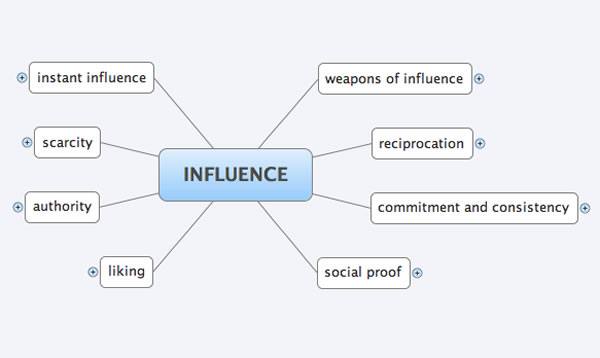
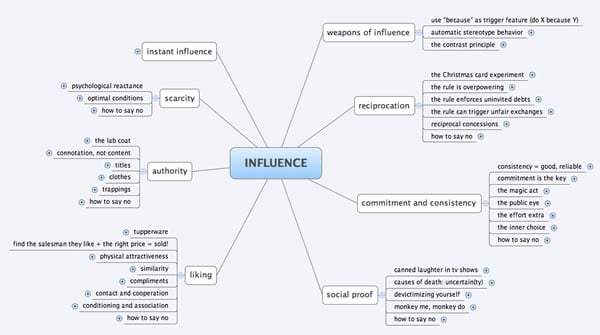
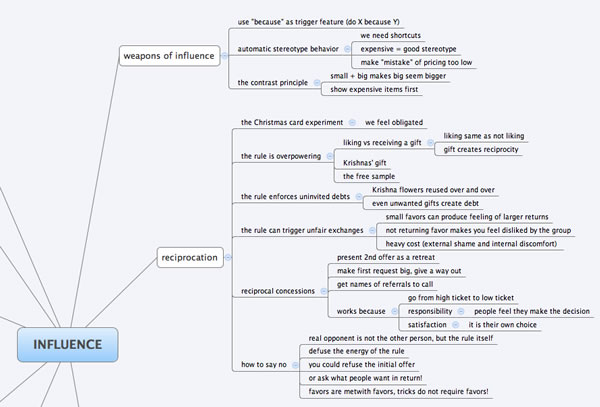
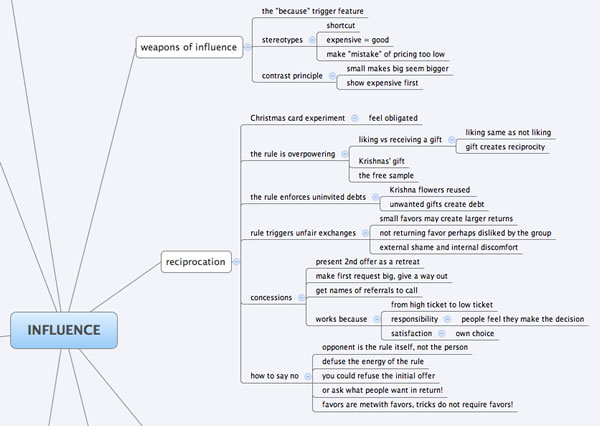
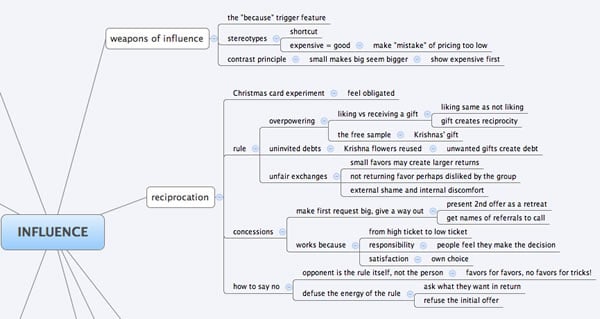
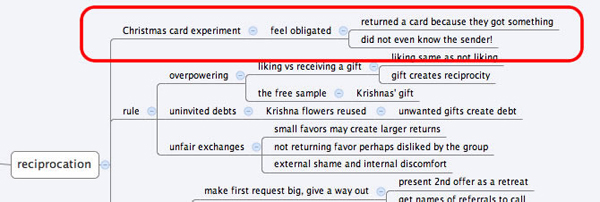
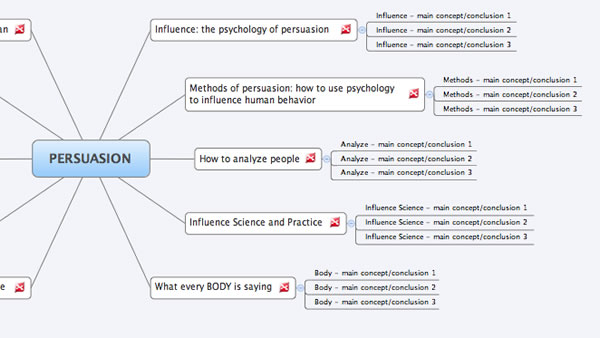
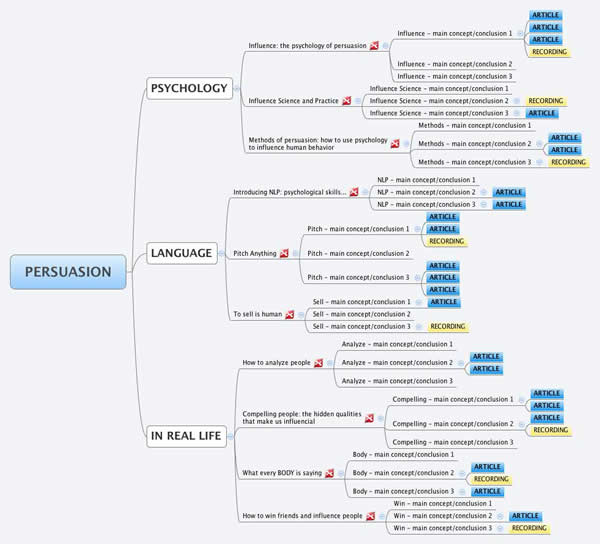




Hi Arjen,
Great post.
Congrats on getting on BBT.
You said something VERY important there … knowledge breeds confidence. It’s so true. The more knowledgeable you are about something, the more confident you’ll be speaking on it when asked. That’s why it’s so important to constantly read and gather more new information.
I like the mapping idea to read books in less time .. and basically get a sense of what the book covers. However, when it comes to blogs and blog posts, the thing I’m trying to avoid is have people skimming. But that could be avoided with power words and attention-grabbing sub-heads.
Still, I like this process that you created here. Very creative indeed.
– Andrew
Thank you Andrew for your thoughts. Wow, you read really fast! You don’t need mind mapping!
Mind mapping a short article often comes down to just adding a couple of words or a short conclusion. With longer articles it is like mind mapping a chapter from a book.
I was just closing from work to check my best Blog ever. . And gladly i was serve with this precious lunch – Amazing!
Hey arjen, you just made to see being an expert in a different angle. . See i love it
And not only that, i too have learn how to become an expert in my field as an Online Marketer .
Do have a great day, probably take more coffee on your spare hour
Cheer!
John Maduka ( The NetPreneur of our time. . . )
Hi John, glad you liked it.
You could also outline your knowledge as an Online Marketer to see where there are gaps or possibilities for you to expand or learn more.
Just send me a map if you like and we can have a look at it together.
Thanks again!
great post man I did enjoy all the information
confidential is a key component for success however gaining the confidence you need to Consume as much information as you can. The more you know, the more you are informed, and the more informed, the more ideas. that will make you known as someone who is constantly learning, engulfed in ideas.
I did like how you did use the maps very good addition thanks for the article
-hamza Adams
Thanks Hamza!
One thing I like about the mind maps is that I don’t need to think about taking notes after I read. The notes are most of the time already done (or at least 80% of them).
And it is true what you say about having more ideas. Seeing information in one overview, you can’t help but see fresh angles to your knowledge. And that is something you can share again 🙂
Great post. One of the lessons from the Dale Carnegie course on public speaking is that you have to earn the right to speak on a topic. You do that by one of two methods–personal experience or research. I’ve always felt like this is also true of writing. Before you write about a topic, you need to earn the right to do so. For most people, this is going to involve research. You’ve presented a great way to organize and go about that research.
Many thanks for your thoughts and what you said about writing from experience or research.
Using this method you can do a lot of research in a record time. What I talk about in the download via the bio link is how you can take this research and get the experience part covered as well.
Always make sure you apply what you learn!
Like you said, writing is a great way of doing that.
Thanks again!
Arjen,
Great to see you here!
I can be a note-taking ninja, but I’ve never heard of this fast technique to map an entire book in an hour and create a comprehensive mind map of your topic. This is a terrific aid for anyone.
My mind is whirling — I can think of several topics to use with this technique.
Many thanks for teaching this to the BBT community.
Marsha
My Queen, thank you for sharing your thoughts!
I completely understand the whirling mind. This little technique makes it so much easier to get more knowledge.
On my website, I commit to doing one area of expertise a month using this technique and share what I learn.
The beauty of this is… I never have to think about topics ever again 🙂
And…
Teaching this to the BBT community is just the least I can do because I learn so much from all the other people here!
Amazing, Arjen. Have skimmed through several mind mapping article. But the simplicity of your suggestion is down right amazing. While so? As I because of its downright simplicity. Now mind map no longer looks like one magical concept emanating from the moon thanks to you.
Thank you Peter!
Yes, I understand what you say about the magical concept of mind mapping 🙂
I love simplicity and that is reflected in most of my maps I think. I don’t like to add too much noise. Mind mapping should be helping me. I don’t want to waste time on creating a beautiful mind map.
That is why all the maps in the post are kind of dull…
But if that is helping me create expert knowledge… no problem 🙂
Enjoy using the technique and enjoy mind mapping!
What impresses me about the experts I follow is the breadth of their knowledge, and how they put a whole lot of seemingly different ideas together and come up with breakthrough ways of doing things.
I know they read widely beyond their field. And that takes time. Thanks for this post, it will help me extract loads of value from my reading in less time.
Thank you Alison for your thoughts.
What you could do to think outside the box is add information from different fields in a single map and just look at what you see.
Putting different ideas and concepts together makes your mind look at it differently.
Just another way of using a master map or a mind map.
Enjoy your reading next time!
Great article! I have never had the patience for mind mapping but I like the way you’ve presented this and it makes a lot of sense. I’ve bookmarked this article to spend more time going over your strategies again.
I know precisely where I keep tripping myself up. I feel confident among those who actively blog in my particular niche, but I’m an author and a coach and there are more than a few prominent experts in those areas who have impressive degrees. I have the practical experience but no letters after my name and for whatever reason no matter how many people tell me how much I’ve helped them I keep reflecting on those missing official creds. One thing I have failed to do is share some of the feedback and testimonials from my followers on my blog and that would probably help me as much as my readers.
Thank you Marquita.
I understand what you say about the official credentials. You can use this perfectly to go through academic books. You will be amazed how much you learn by just using the mind mapping technique on a study book.
And about feeling you need the degree… You already make a difference. Perhaps you could compile a list of your testimonials and feedback and start your day reading them. It might be a great way to start your day 🙂
Great post. Before I read this, I had it on my To Do List to create a summer reading plan. I’ll use this post to maximize that!
Thank you Johanna. I think you can add some more books to your list when you use this method 🙂
After you mapped a book and you start reading it like you would normally do… watch how much more confident and relaxed you will be when reading.
Reading your book is almost like visiting the home of a close friend 🙂
Excellent idea to mind map a blog to get what it’s all about. Thanks Arjen. Mind-mapping helped me study at school years ago when reading failed me. I bought all the books at the time about Mindmapping by Tony Buzan, the father of the art.
I think two great uses I’ll put your idea to work is sourcing guestblogging opportunities and networking with bloggers.
Great to see you here on BBT. More please!
Hi Tom, thank you for your comment.
I think it is a great idea to use a mind map for networking. You can create a map about each individual blogger, and you can create a master map on all the bloggers, their interests and niches, specialities and how they are connected.
Look forward to hearing more about that when you are using the technique!
Hello and thank you for such an informative post. I have never read anything so exhaustive on mind mapping. Of course I understand the idea behind brainstorming, however this helps me in ways I cannot even speak of right now!!
As an emerging writer with just getting my blog on marketing started this fits right in for me, thank u thank u thank u.
Hi Jireh, thank you! Great to see it can help you.
You could outline your writing in a mind map as well. Or create one for your blog.
If you have any questions, please let me know. I am more than happy to assist you.
Thanks again!
So happy to read your brilliant post on BBT, Arjen!
I’ve never considered using mind maps for books, and what you explained here seems like it’s easier than I thought. Hoping to apply this with the current book I’m reading now. Trying to get out of the comfort zone rather than reading linearly from start to finish.
Thanks, Arjen, for the map to mind mapping! You got me excited starting this journey to a confident expert 🙂
Hi Lily, great to hear from you!
Yes, this system makes it really easy to outline your (new) knowledge.
What I like about it, and what most people find very difficult, is that you should not think about creating the map too much. Like Nike said: Just Do It!
First build the content of the map, then you think about it. Keep the two of them separated. It makes this go a lot smoother and faster.
Enjoy your new areas of expertise!
I already follow the book skimming / speed reading techniques you have mentioned in this post. However, the creative use of mind maps is something new for me. Going to apply that soon. Thanks for the great tip 🙂
Hi Kashif, thank you commenting.
Just play with the information in the map. Create a clear story that helps you understand and remember what you outlined. If you do that, reading and learning is so much easier and fun!
Nice article! I love the advice about combining info from multiple sources into one “expert” mind map! Seems like such a natural idea, once you shared it! Sharing!
Hi Jamie, thank you for pointing that out.
Yes, once you hear it, it makes sense, doesn’t it 🙂
Keep connecting the wisdom and knowledge of your experts to learn even faster.
ello Arjen,
Oh my – what a fantastic post, and I couldn’t agree more with what you shared! Wow, super packed with valuable strategies and actionable tips, thanks so much for sharing.
It’s true – when we’re well-prepared and knowledgeable in something, this will allow us to be confident and enjoy a positive mindset. It’s a simple formula, but you’ve outdone yourself in providing tangible ways to achieve this very thing!
Mind Mapping is not something I’m unfamiliar with, but have underutilyzed it, and that stops today!
Bookmarking… Thanks!
˜Carol Amato
Thank you Carol!
Mind mapping is something many people know about. But it often remains something that is just a nice thing, rather than a super practical thing you can benefit from.
Now you have a system for using it… without probably even knowing how to mind map 🙂
Enjoy, and please let me know what else I can do for you.
Hey Arjen,
Great post and good to see you on here! I totally agree that knowledge and experience build confidence. I think Te main issue people don’t feel confident is they need more experience in their field and so don’t take the action required. But if you can supplement that experience with enough knowledge, to then have the confidence to take action and then gain experience- then it’s not long before you become that authority!
I actually have a map like this in my head but I should probably put it down on paper to save brain power!
Stay awesome Arjen!
Daniel daines-Hutt
Hi Daniel!
Thanks for sharing your thoughts. You are right, many people feel insecure and don’t take action.
With this method you can start small, just one mind map from one book.
Than build the network of mind maps. Apply what you learned and you will feel more confident every day.
It is just like James Clear said in one of his posts. Read 20 pages per day, every day, no exception. You will grow that way.
Now you have the change to create a mind map of your books even faster. Take 30 minutes and do 100 pages every day.
I do this as well. Every day, I take 30 minutes to do this. It gives me more ideas, knowledge and action points that help me and the people around me.
I am curious about your map (which is still in your head). Care to share it with me one day?
Thanks again!
Hey Arjen,
I will definitely have to get it written down to share.
I read a book or so a week so my map has a few “odd additions” in sections you wouldn’t traditionally associate with a subject.
The usual sales and marketing, psychology, how to raise children (I have no kids) martial arts and tactics, to dealing with social economics and more!
There’s always something that can be gleamed from each one!
My main focus for now is the psychology and process of a sale and the paths/systems we can build to automate or simply that…
Sexy stuff eh haha!
Daniel
Arjun,
This is brilliant – thank you. My issues isn’t so much speed as I go through books fast, but more around collating and quickly recalling what I’ve read.
Such a different approach; I love it. Going to start a mind map today!
Look forward to seeing more from you,
Misty
Hi Misty,
Thank you for your comment.
Yes, different, but really simple to apply 🙂
How is the mind map going?
If you have any questions, just contact me.
Thanks again!
Excellent article Arjen, I can’t wait to put your ideas into practice. Thanks for sharing.
Thank you Helen, I look forward to seeing your (first) mind map.
Just email me and let me know.
Dear Arjen, forgive me, but I feel compelled to play the contrarian here.
Your definition of an “expert” (*feeling* like one enough to help others) and your approach to “reading” books without actually doing so in depth reminds me of the French psychoanalyst and lit prof Pierre Bayard’s cheeky bestseller “How to Talk About Books You Haven’t Read.”
I do appreciate all the work you obviously put into this post and the clear, helpful instructions and applications to books, posts, videos, and podcasts. And indeed, this is just the sort of technique an excellent instructor would teach, say, college and grad students to quickly acquire an overview of their chosen field of study. But they would also argue emphatically that the student must then go in for a Deep Dive, followed by thousands of hours of Deliberate Practice, if they have any hope of truly meriting the designation “Expert.”
I, for example, spent 15 years as an Ivy League academic book and journal editor–eventually of world-renowned authorities in fields as diverse as history, philosophy, social science, cultural studies, etc. I put in well over the proverbial 10,000 hours mastering the art of editing and more hours gaining overviews of these various fields in order to be able to hold my own in conversation with the experts and come to be trusted as their go-to editor.
I mention this simply to note that there is No Way I could have mindmapped 10 or even 100 books on editing and these fields and not been laughed out of even cocktail-party conversations with these true éminence grises.
A poseur expert/growth hacker on the web or in person might be able to get away with the quick skim, leading to a general overview, of knowledge sources among those fairly ignorant of a field, but s/he would never be taken seriously by those truly in the know, with years, even decades of hard-won knowledge and experience practicing their science, art, or craft.
That said … Again, I think your technique is excellent for starting off on the Master’s Path. And you’ve definitely won yourself a new blog reader! I’ve no doubt I’ll enjoy watching your monthly forays into new subjects.
Cheers!
Many, many thanks for sharing your thoughts and wisdom! Great to learn from you.
To be very blunt… you made a mistake.
You are not an expert!
Is Jon Morrow an expert writer? Or is Djokovic an expert tennis player?
I think they are not. They are masters!
The same applies to you. You are a master in your field. I think you are well above the expert level 🙂
I completely understand what you mean. We do not become experts by reading or skim reading a couple of books.
As you said, this process helps people to make a jump start in growing their expertise or knowledge. Then they should use it to develop skill. That is not the focus of this article (it could be a great addition to it 🙂 )
I look forward to reading more of your work and to learning from you!
Thanks again!
Arjen
You knocked speed reading out of the park. I have always wonder how people done it, now i know. Now i get to catch up on so many of the great blog post that i have got behind on .
Thanks so much
–Jason “aka the man with a plan of world domination.”
Hi Jason,
Thank you for your comment. I look forward to seeing the maps of your soon-to-be-read books in my mail box 🙂
Maybe you can outline your plan of world domination in a map as well 🙂
Talk soon!
I use mindmaps for brainstorming but rarely for reviewing lessons from books. I may need to rethink them so.
As an aside your optin page made me smile “No books were harmed while making these maps.
Hi Bryan,
Thank you for your comment. Yes, I wanted to add that little line to the optin page, and not have some no spam bla bla bla thing there 🙂
When you use mind maps for brainstorming, do you add a to do list or action step list to it as well? That way you go from creativity and thinking straight into action. Makes it easier to benefit from the map.
Thanks!
Wow! this is incredible wisdom. I like what you have brought out here…. Knowledge breeds confidence, now i know what i need to become an expert. Oh my, its amazing.
Getting these nargets of wisdom each day, no challenge can overpower me.
Thank you.
Hi Cate,
I am sure you can become an expert. Just choose your niche and build the knowledge network. Then (and this is very important) start applying what you learned!
You will see results really soon!
Thanks again!
Hi Arjen … thank you for this brilliant post. What I’ve got out of it probably isn’t what you were aiming at though!
I’ve been researching and writing content for over a year for a couple of ebooks, but have been stuck pulling it all together. Partly the old imposter-syndrome at work, and partly the overwhelming amount of ideas and material to sort out.
I think if I reverse engineer your mind-mapping approach, it might be a powerful way of organising my material and designing the books.
Since my target audience is specifically micropreneurs who are short of time, it’s important the design and structure of the content meets the needs of skimmers – which is pretty much everyone these days!
I can’t wait to put it to the test.
Hi Sue,
You are absolutely right!
You can totally do this the other way around. I wrote 5 books that way!
What you should or could do is outline the book (chapters, sections, paragraphs), and then add 5-10 bullet points to each paragraph or section.
Then, in the mind mapping tool itself, you write your text in the notes section of each ‘node’. When you are ready, and you feel the outline is the most powerfu one… you expert to Word!
There you go, book ready. And you probably write it so much faster this way 🙂
If you have any questions on this, please let me know so I can help you out. I have some experience in this 🙂
Thanks again!
Thank you for the useful tips and your generous offer Arjen. I’m currently focusing on client projects, but as soon as I get some time to work on my ebooks, I’ll keep your offer of help in mind. I’m feeling very positive that this approach will help “unstick” me!
By the way, I did a bit of research into mind mapping tools. I love the look of Tony Buzan’s but I’m going with Coggle, which is the best looking of the free options, imho.
Hi Arjen
Thanks for your post I will certainly give some of your techniques a go. I think anything that helps learning is great!
I think you made an interesting point about people who we look up to as experts, will also have people they look up to as an experts too. I believe in the learn, implement and teach approach.
If I learn how to do something and become proficient enough to teach others how to do it, then I have expertise in that area. I may not be an expert, and there will always be people who have more knowledge and skill in this area, but I have more knowledge than those who want to learn from me.
People don’t realize this and that stops them from getting out there and starting their own business or selling their own products/programs etc.
As long as you’re honest with yourself and others and only teach what you actually know, you should never feel like a fraud.
Thanks again Arjen
Hi Vinay.
You are absolutely right!
When my computer is messed up, and the next door neighbor can help me out, I probably think he is an expert.
Just as long as you target your audience the right way, you can look like an expert, feel like an expert and act like an expert.
And the more you learn and implement, the better you become.
You don’t have to be a world class expert before you can help others.
Thank again for sharing!
Thanks for your reply Arjen.
Exactly right, if the guy can fix a computer and you can’t, he may not be Bill Gates, but he has expertise so can help you.
Thanks Arjen
Such an important point in this post! I’ve heard it said that the wise man is the one who knows he knows nothing… I think that if you know enough about a topic to know you’re not a flawless expert at it, you’re on the right track.
Hi Jordan,
You are right! Always be willing to learn more.
And now you can use a simple method to fix flaws in your knowledge and thinking. (probably to realize that you have other flaws to be fixed 🙂 )
I am very happy to read your article. How to read the book quickly, but can understand the entire contents. Of course, the content that is strategic and important.
Furthermore, how the strategy to read and understand the contents of the book or article is applied in building a blog that can produce success.
Yes, I think this is a very interesting idea. We need to organize a way of thinking and managing blogs as you described. Thank you.
Hi Sudarto,
Thank you for sharing.
The next step to take is take what you learned now and implement it, preferably on a daily basis.
Take action and grow!
Thanks for sharing this tips. I am a first time visitor who landed on this blog while searching for “how to make money via a career blog'”. Though I opened a lot of sites, non was as rich as this. You just succeeded in doing one thing.. And that’s turning me to a regular visitor.
Hi James,
Thank you for your really nice compliment!
I hope you find a lot of motivation and ideas on the blog. And remember to compliment your reading with taking massive action 🙂
It’s better not to read at all than to read without taking action. Would be coming here on and on to see more.
What a great and unique idea!
Will start implementing right away.
Thanks,
Sue
Thank you!
I look forward to seeing your results.
As a Librarian, I find this an incredibly interesting and useful approach to researching a knowledge area or subject! Obviously the point is to get a grasp on key points, as quickly and easily as possible. Impatient high school students who are hard to engage would love this approach! Your article has informed my practice ☺
It is sad to hear that most people don’t learn how to learn. This stops many people from learning.
Hopefully this helps people to understand that learning is a lot easier than they think.
And Chelsea… Enjoy your time at work with this system 🙂
Hi Arjen,
Congrats on your post on BBT – what a fantastic article! I will be using this technique for sure.
Also – as an aside – I found a tool I really like recently for transcribing interviews and other audio and video files. It’s at oTranscribe.com. Although we’re not talking about transcribing here, I can see how the tool would be really useful for creating the outlines and notes from recordings. The speed control is right in the window and you don’t have to switch between apps to make notes.
Hi Leanne,
Thank you so much for your comment. I hope you have a lot of fun using it.
What you could do is this. Watch the video and listen to it using headphones.
Then you use the transcribe tool to capture relevant notes. After you did that, simple structure and outline the captured notes in a mind map.
Thanks again!
Awesome yet simple techniques Arjen! I have a whole pile of books waiting for me but didn’t have the time and energy to read them all…am definitely going to give your method a go (and maybe go back to the ones that I really like to read for ‘real’!
Hi Linda!
You go for it!
Create maps from those books, outline them in a full expert map and use the information as much as possible.
And of course, if you feel you need more information you read the book in detail or you “just read a couple of additional books”. 🙂
Enjoy!
Hey Arjen,
I have read a few posts on mind mapping and your post here was the most detailed and comprehensive out of all them. But it’s true that you are the average of the five people you hang around with the most. Although I hate to admit it, but I had to cut my time with some of the friends I use to hang around with. But if I want to accomplish some of the things they don’t believe it, then I’m doing the right thing. Like Albert Einstein quote “If you want to live a happy life, tie it to a goal, not to people or things.”
Thanks for the share Arjen. I’ll have to come back and use this post as a reference once I start to use mind maps. Have a great rest of the week!
Thanks for sharing, Arjen. I’ve long been a fan of mind mapping and use it in a variety of ways (white paper outline, books, brainstorming sessions etc). Your explanation of the process is an easy read with pertinent tips and I’m anxious to share this with others! Happy mapping!
I just learned a perfect use for myself with mindmaps! I never took the time to see how they could help before in both my book writing and reading. You taught us easily and succinctly with visuals. Perfect! But the best part is I also picked up several ideas from the comments posted, and I thank the readers profusely as well. Wish I had opened a mindmap before reading all this.
As an aside, we are all experts in something through education and experience. It is our duty to inform those needing our information at the level we can teach it. You don’t go to Albert Einstein or Isaac Newton to learn elementary science. You grow to that level of information. Thank you everyone for your comments.
Hi Arjen!
I wish some body told me about these techniques, when I was in college, with so much to read, study and understand. But its never too late, I will be trying these tips today to see if they are for me or not. But overall made complete sense.
Hi Arjen,
What an amazing, systematic approach to achieving expert status! I love that you didn’t shy away from defining what a MVP might be and then showed a roadmap (or should I say mindmap) to achieving it.
This post is getting archived, my friend. I’ll be referencing this work as I work on creating some new content about authority positioning on my site. Thanks for your truly amazing post.
Courtney